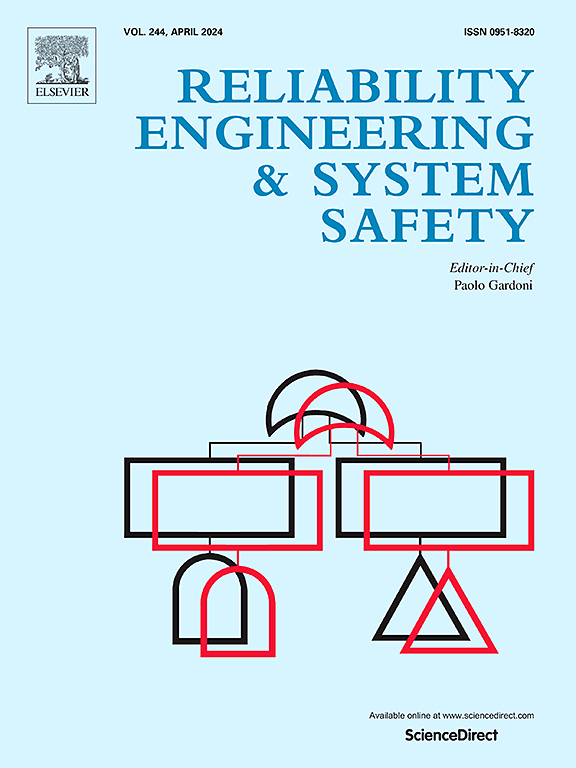多状态系统的最优任务中止和选择性替换策略
IF 11
1区 工程技术
Q1 ENGINEERING, INDUSTRIAL
引用次数: 0
摘要
为了降低安全关键系统的故障风险,在确定特定故障条件时实施任务中止和救援程序是有益的。现有的任务中止模型主要关注具有二元状态组件的多状态系统,通常在每次救援行动后所有失效组件将被完全替换的假设下运行。然而,许多现实世界的工程系统采用多状态组件,由于更换资源的限制,更换所有失效组件可能不是最佳方法。因此,针对多状态部件系统设计有效的任务中止和选择性替换策略势在必行。此外,现有的选择性更换模型主要关注系统退化的情况,经常忽略任务的进度,这可能导致次优维护决策,因为它没有考虑任务进度和系统性能如何与部件更换需求相互作用。针对具有多状态组件的k- of-n: F系统,引入了基于动态条件的任务中止和选择性替换策略,动态评估系统组件的状态和任务执行情况。采用递归和离散化算法推导任务成功概率和系统生存能力。我们开发了优化模型,旨在最大化这些概率,同时最小化与维护和更换行动相关的预期成本。一个涉及云计算系统的案例研究说明了所建议的策略的优点,并证明了与现有替代方案相比它们的有效性。本文章由计算机程序翻译,如有差异,请以英文原文为准。
Optimal mission abort and selective replacement policies for multi-state systems
To mitigate the failure risk in safety-critical systems, it is beneficial to implement mission abort and rescue procedures when specific malfunction conditions are identified. Existing mission abort models predominantly focus on multi-state systems with binary-state components, often operating under the assumption that all failed components will be completely replaced after each rescue operation. However, many real-world engineering systems employ multi-state components, where replacing all failed components may not be the optimal approach due to constraints on replacement resources. Therefore, the design of effective mission abort and selective replacement policies for systems with multi-state components becomes imperative. Additionally, existing models for selective replacement primarily focus on the condition of system degradation, often overlooking the progress of missions, which can lead to suboptimal maintenance decisions, as it does not account for how mission progress and system performance interact with the demand for component replacement. This paper introduces dynamic condition-based mission abort and selective replacement policies for k-out-of-n: F systems with multi-state components, which dynamically assess the condition of system components’ state and mission execution. Mission success probability and system survivability are derived by employing recursive and discretization algorithms. We develop optimization models aimed at maximizing these probabilities while minimizing expected costs associated with maintenance and replacement actions. A case study involving a cloud computing system illustrates the advantages of the proposed policies, demonstrating their effectiveness in comparison to existing alternatives.
求助全文
通过发布文献求助,成功后即可免费获取论文全文。
去求助
来源期刊

Reliability Engineering & System Safety
管理科学-工程:工业
CiteScore
15.20
自引率
39.50%
发文量
621
审稿时长
67 days
期刊介绍:
Elsevier publishes Reliability Engineering & System Safety in association with the European Safety and Reliability Association and the Safety Engineering and Risk Analysis Division. The international journal is devoted to developing and applying methods to enhance the safety and reliability of complex technological systems, like nuclear power plants, chemical plants, hazardous waste facilities, space systems, offshore and maritime systems, transportation systems, constructed infrastructure, and manufacturing plants. The journal normally publishes only articles that involve the analysis of substantive problems related to the reliability of complex systems or present techniques and/or theoretical results that have a discernable relationship to the solution of such problems. An important aim is to balance academic material and practical applications.
 求助内容:
求助内容: 应助结果提醒方式:
应助结果提醒方式:


